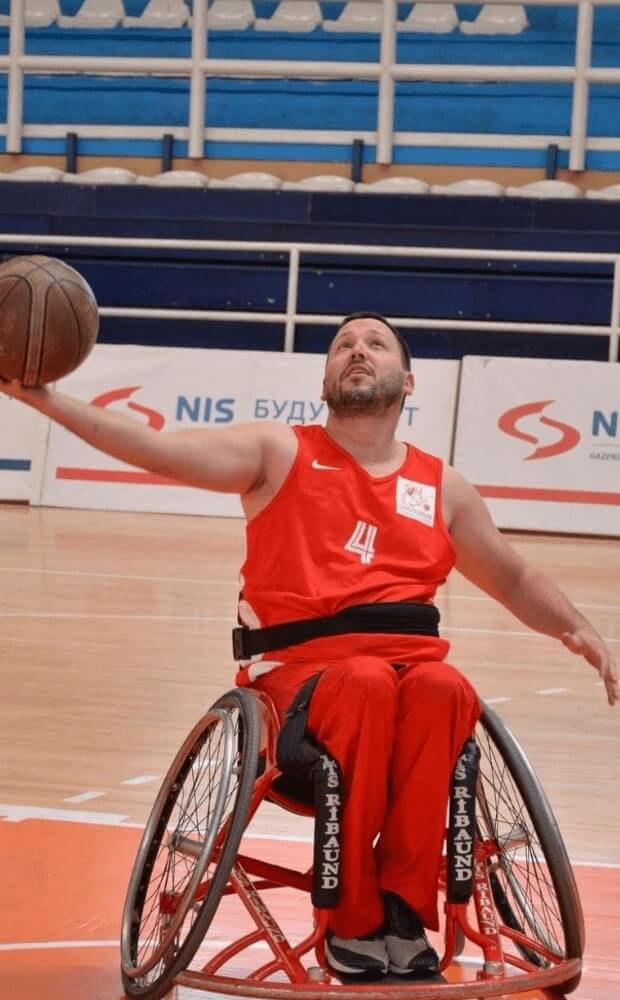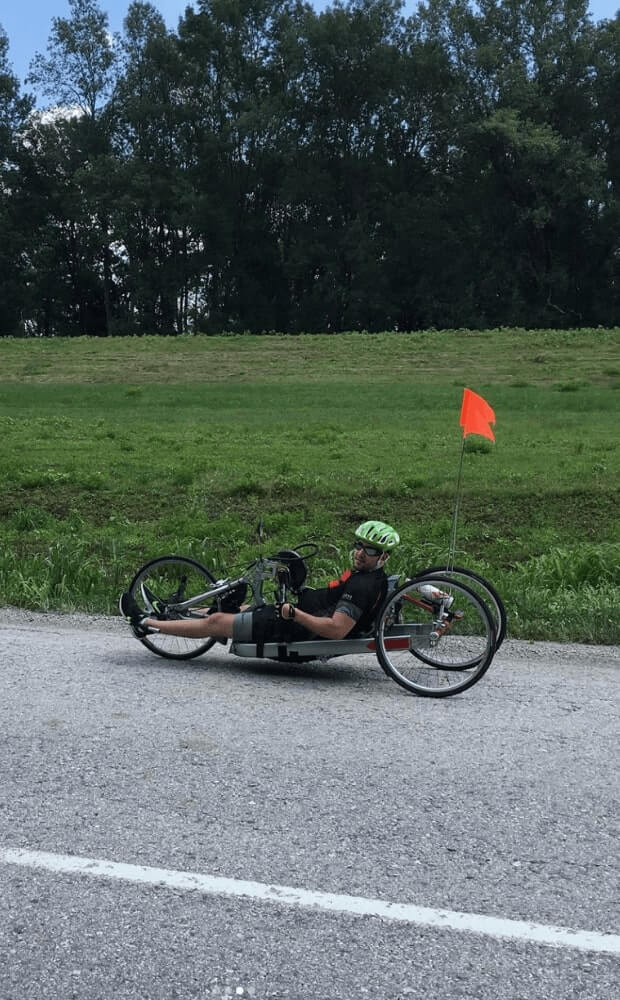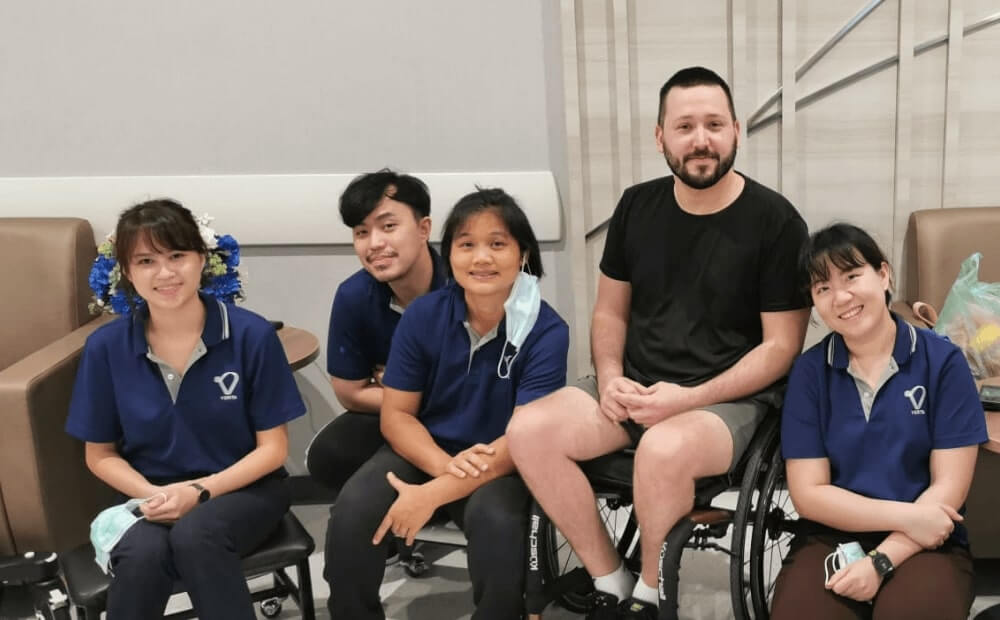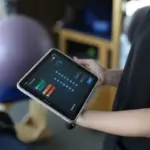Could you tell us a bit more about yourself? Introduce yourself to everyone.
Okay, my name is Nikola. I’m from Serbia. I’m 31 year old and I came here, to Bangkok, for epidural stimulation after maybe three years following my injury. I have a spinal cord injury, the level is T5 and it’s a complete injury. I got injured in a car accident – actually, I was riding my bike, and I got hit by a truck. I first started to heal from injury in a hospital in Serbia and that lasted maybe one year altogether and treatment, including some practice in physical therapy. So after one year, that was it, you know, I hadn’t had any major improvement and then it was like ‘Okay, now you do it on your own’. So that’s when I started to think ‘what can I do myself to make some improvement?’ and I started to research. From the start, there is always a lot about stem cells and some physical therapy is the usual stuff. But there is also a lot of discussion about new stuff and improvement in treatment and that’s how I got to epidural stimulation.
Could you tell us, in your own words, your own way - what is this treatment?
Okay. My idea of this treatment was that I received some electrodes in my spinal cord, and they will help me to move and actually I was pretty much right!
So there is some kind of device that I have now in my spinal cord that helps me to transfer the signal from my brain, and to send it to my leg and any other muscle that I want to move. After my surgery here, and after my first mapping, I actually got some muscles moving, first on my leg, and then after that we worked on the core muscle. In parallel to that I have received some stem cells and my improvement after stem cells was not something major, but I think maybe in the future, it will be more. We usually have to wait at least four to six months, so it’s still okay, you’re right.

So you came from Serbia. It's quite far from Thailand. How was your decision making process?
Actually, my decision was pretty much on the table all the time, because once I’d received some information about it I thought it was best. But you always make decision to go there and then you realize that there is something better and you change your mind. If you’re gathering funds for treatment, like I was, and everybody’s helping you, and you change your mind like that, you always worry, will they take me seriously? You know, ‘He’s thinking something, then he changed his mind’. But I was like, I need to make the best decision, that’s my goal and if somebody doesn’t understand that, that’s also okay! I almost made a decision to go to a clinic in my country. They do physical therapy, they have some stem cell therapy, and they’re quite good. After I finish here, I will go there to continue my physical therapy. So, it would not have been a bad decision to go to them, but when I realized about you guys then I figured out that this is a bit more than that so that’s how I decided to come here.
So you mentioned your fundraising - we had quite a few people also asking about the price of the procedure and how long the stay is. Could you maybe answer this?
How is your everyday here? What do you do when you wake up? And how does the day go?
How could this treatment help a paraplegic patient like yourself? What improvements have you seen so far?
Well, if you know a paraplegic person then you know that besides that they can’t walk, they have some other problems like bladder and bowel problems. Some of the patients have strong spasms and that also can be a big problem. So, the first major thing that I managed to do here is to make a program for inducing spasm and it works great. I actually have three programs so I can combine them. The major progress that I’ve seen is movement of my extremities – I can move my leg. It is not a perfect movement and I cannot control it perfectly but it is there and I can work on it and that is the most important thing. It is a big change but I need to practise now and make it more perfect. Also, we have done some measurements. We did some measurements on the first day and we did it again yesterday to compare stuff and there is a two centimeter increase in the volume of my leg muscles. I don’t know if there is any bigger proof than that! That I can move my leg and that I can build my muscles.
Before you came, what was your biggest fear undergoing the surgery?
And what were the first improvements after surgery?
We were talking about mapping earlier. Do you think you can explain what mapping is, who does it and how are you involved in the process?
Mapping is some kind of setting process for the epidural stimulator, to transfer the signal the best way and for me and my body to understand. So we can turn on the device and it will work and maybe produce some movement. We would not know what to do and how to react if we wanted to move on our own – there’s nothing so mapping is like precise work to establish what you need to do to make a movement that you want. I think that is the best explanation that I can give. Mapping is done by a physiotherapist who is trained for it and the most important thing I think is practice. Mapping can make your movement precise and if the mapping is good, then you can have massive potential from the stimulator.
Now I’m learning to use the device to turn on the program by myself so I can remember what program is for what. I have 12 programs so if you want me to turn on every program, I will need to look on the web, because I am still learning! But mapping went well and we found all the appropriate programs that we could and now it’s all up to me to practise.
We mentioned the spasticity program previously, when do you use that?
Did you regain control of your bladder?
Does it work for those who have developed spasticity in the limbs over time?
After the procedures, do the patients have to still go through physical therapy?






